
Humphrey DeForest Bogart, colloquially nicknamed Bogie, was an American actor. His performances in classic Hollywood cinema films made him an American cultural icon. In 1999, the American Film Institute selected Bogart as the greatest male star of classic American cinema.

The Caine Mutiny is a 1954 American military trial film directed by Edward Dmytryk, produced by Stanley Kramer, and starring Humphrey Bogart, José Ferrer, Van Johnson, Robert Francis, and Fred MacMurray. It is based on Herman Wouk's Pulitzer Prize-winning 1951 novel of the same name.

The African Queen is a 1951 adventure film adapted from the 1935 novel of the same name by C. S. Forester. The film was directed by John Huston and produced by Sam Spiegel and John Woolf. The screenplay was adapted by James Agee, John Huston, John Collier and Peter Viertel. It was photographed in Technicolor by Jack Cardiff and has a music score by Allan Gray. The film stars Humphrey Bogart and Katharine Hepburn with Robert Morley, Peter Bull, Walter Gotell, Richard Marner and Theodore Bikel.
The year of 1942 in film involved some significant events, in particular the release of a film consistently rated as one of the greatest of all time, Casablanca.

To Have and Have Not is a novel by Ernest Hemingway published in 1937 by Charles Scribner's Sons. The book follows Harry Morgan, a fishing boat captain out of Key West, Florida. To Have and Have Not was Hemingway's second novel set in the United States, after The Torrents of Spring.

Beat the Devil is a 1953 adventure comedy film directed by John Huston, starring Humphrey Bogart, Jennifer Jones, and Gina Lollobrigida, in her American debut, and featuring Robert Morley, Peter Lorre and Bernard Lee. Huston and Truman Capote wrote the screenplay, loosely based upon the 1951 novel of the same name by British journalist Claud Cockburn writing under the pseudonym James Helvick. Huston made the film as a sort of loose parody of the 1941 film The Maltese Falcon, which Huston directed and in which Bogart and Lorre appeared. Capote said, "John [Huston] and I decided to kid the story, to treat it as a parody. Instead of another Maltese Falcon, we turned it into a... [spoof] on this type of film."
To Have and Have Not is a 1944 American romantic war adventure film directed by Howard Hawks, loosely based on Ernest Hemingway's 1937 novel of the same name. It stars Humphrey Bogart, Walter Brennan and Lauren Bacall; it also features Dolores Moran, Hoagy Carmichael, Sheldon Leonard, Dan Seymour, and Marcel Dalio. The plot, centered on the romance between a freelancing fisherman in Martinique and a beautiful American drifter, is complicated by the growing French resistance in Vichy France.
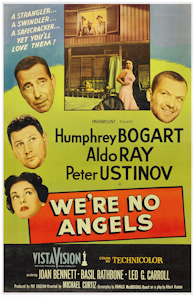
We're No Angels is a 1955 Christmas comedy film directed by Michael Curtiz, starring Humphrey Bogart, Peter Ustinov, Aldo Ray, Joan Bennett, Basil Rathbone, Leo G. Carroll, and Gloria Talbott. Shot in both VistaVision and Technicolor, the film was a Paramount Pictures release.
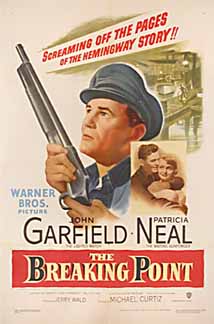
The Breaking Point is a 1950 American film noir crime drama directed by Michael Curtiz and the second film adaptation of the 1937 Ernest Hemingway novel To Have and Have Not.. It stars John Garfield in his penultimate film role and Patricia Neal. His very last film was He Ran All the Way Home.

8 Ball Bunny is a Warner Bros. Looney Tunes cartoon directed by Chuck Jones. The short was released on July 8, 1950, and stars Bugs Bunny and Playboy Penguin.

Passage to Marseille, also known as Message to Marseille, is a 1944 American war film made by Warner Brothers, directed by Michael Curtiz. The screenplay was by Casey Robinson and Jack Moffitt from the novel Sans Patrie by Charles Nordhoff and James Norman Hall. The music score was by Max Steiner and the cinematography was by James Wong Howe.
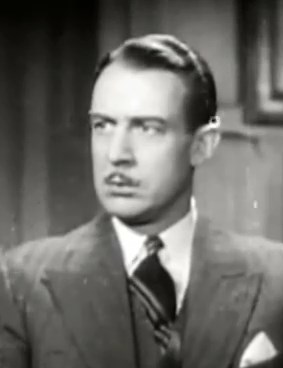
Arthur Lester Matthews was an English actor. In his career, the handsome Englishman made more than 180 appearances in film and on television. He was erroneously credited in later years as Les Matthews. Matthews played supporting roles in films like The Raven and Werewolf of London, but his career deteriorated into bit parts. He died on 5 June 1975, the day before his 75th birthday, in Los Angeles. His ashes were scattered into the Pacific Ocean.

Action in the North Atlantic, also known as Heroes Without Uniforms, is a 1943 American black-and-white war film from Warner Bros. Pictures, produced by Jerry Wald, directed by Lloyd Bacon, that stars Humphrey Bogart and Raymond Massey as officers in the U.S. Merchant Marine during World War II. Typical of other films in the era, Action in the North Atlantic was created as a morale-boosting film during this world war and a film that told the story of unsung heroes. As noted by film critic Bosley Crowther, "... it's a good thing to have a picture which waves the flag for the merchant marine. Those boys are going through hell-and-high-water, as 'Action in the North Atlantic' shows."
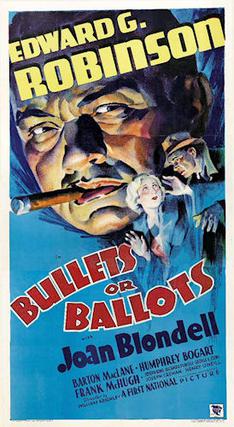
Bullets or Ballots is a 1936 American gangster film starring Edward G. Robinson, Joan Blondell, Barton MacLane, and Humphrey Bogart. Robinson plays a police detective who infiltrates a crime gang. This is the first of several films featuring both Robinson and Bogart.

The Lost Continent is a 1968 adventure film made by Hammer Films and Seven Arts featuring Eric Porter, Hildegard Knef, Suzanna Leigh, Tony Beckley, and James Cossins. The film was produced, directed and written by Michael Carreras based on Dennis Wheatley's novel Uncharted Seas (1938).

The Projectionist is a 1970 American comedy film written and directed by Harry Hurwitz that was the first feature film with Rodney Dangerfield as an actor. The film employed the use of superimposition of older motion pictures, the first time such techniques were used. The film clips incorporated were scenes from Gone with the Wind, Citizen Kane, Fort Apache, The Birth of a Nation, Casablanca, Gunga Din, Sergeant York, The Maltese Falcon and Barbarella.

Men are Such Fools is a 1938 American romantic comedy directed by Busby Berkeley and written by Norman Reilly Raine and Horace Jackson. The film stars Wayne Morris, Priscilla Lane, Humphrey Bogart, Hugh Herbert, Johnnie Davis, and Penny Singleton. The film was released by Warner Bros. on July 16, 1938. The movie is adapted from the novel by the same name, Men Are Such Fools, by Faith Baldwin.
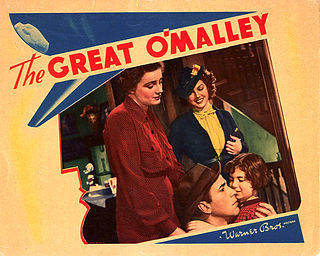
The Great O'Malley is a 1937 American crime drama film directed by William Dieterle and starring Pat O'Brien, Sybil Jason, Humphrey Bogart, and Ann Sheridan. The 1925 silent version The Making of O'Malley starred Milton Sills, Dorothy Mackaill and Helen Rowland.

The Narrow Corner is a novel by the British writer W. Somerset Maugham, published by William Heinemann in 1932.

The Making of O'Malley is a 1925 American silent drama film directed by Lambert Hillyer and written by Eugene Clifford. The film stars Milton Sills, Dorothy Mackaill, Helen Rowland, Warner Richmond, Thomas Carrigan and Julia Hurley. The film was released on June 28, 1925, by First National Pictures. The Gerald Beaumont short story was also the basis of the 1937 Warner Bros. film The Great O'Malley, directed by William Dieterle and starring Pat O'Brien and Humphrey Bogart.


















